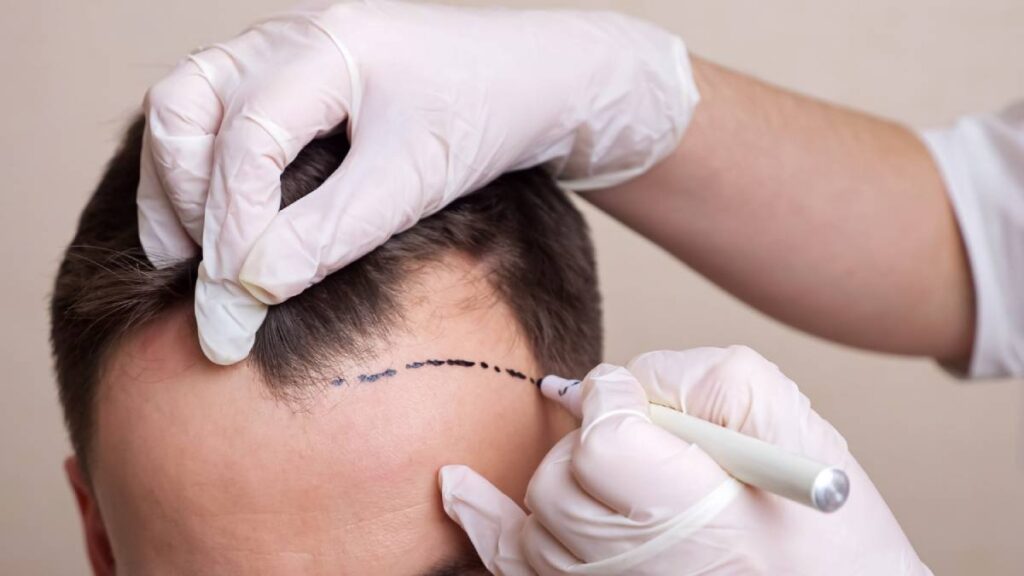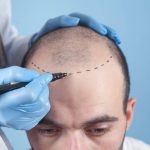Understanding Hair Transplantation: A Permanent Solution
Hair loss is a common concern that affects millions of people worldwide. Whether due to genetics, aging, or other factors, it can have a significant impact on self-esteem and confidence. Hair transplantation is a modern solution to hair loss that provides a permanent and natural-looking result. During the procedure, hair follicles are taken from areas of the scalp where hair growth is still active and transplanted to the balding areas. The result is a fuller, thicker head of hair that looks and feels completely natural. Unlike other temporary solutions, such as wigs or medications, hair transplantation provides a lasting solution that restores your hairline and confidence.
How Hair Transplantation Works: The Procedure Explained
The process of hair transplantation typically involves two main techniques: Follicular Unit Extraction (FUE) and Follicular Unit Transplantation (FUT). Both techniques are designed to harvest healthy hair follicles from the donor area and transplant them into the thinning or balding areas of the scalp. FUE is a minimally invasive technique that extracts individual follicles using a small punch tool, while FUT involves removing a strip of scalp and dissecting it into smaller follicular units for transplantation. Both methods are effective, but your surgeon will help determine which approach is best suited for your individual needs. Regardless of the technique used, hair transplantation results in a natural and fuller appearance, restoring the look of your hairline and hair density.
The Benefits of Hair Transplantation for a Fuller Hairline
One of the most significant benefits of hair transplantation is the restoration of a natural and youthful hairline. For individuals suffering from male or female pattern baldness, thinning hair can lead to a receding hairline and noticeable bald spots. Hair transplantation addresses these issues by providing permanent hair restoration. By transplanting healthy hair follicles to the thinning areas, a more natural and full hairline can be achieved. Over time, the transplanted hair grows just like natural hair, providing a long-lasting solution for those seeking to restore their appearance and confidence. With successful surgery, the hairline is rejuvenated, and individuals can enjoy a youthful and revitalized look.
Is Hair Transplantation Right for You? Assessing Your Candidacy
Not everyone is a suitable candidate for hair transplantation. The ideal candidate for this procedure is someone who has enough healthy hair in the donor area to transplant. Individuals with early-stage hair loss may also benefit from the procedure, as the transplanted hair can help prevent further thinning and create a more even appearance. However, individuals with significant hair loss in the donor area may not be ideal candidates for the procedure. Additionally, patients should be in good overall health and have realistic expectations regarding the results. A thorough consultation with a qualified surgeon will help determine if hair transplantation is the right solution for you.
The Recovery Process: What to Expect After Hair Transplantation
After undergoing hair transplantation, the recovery process is relatively quick, with most patients resuming normal activities within a few days. However, it’s essential to follow post-surgery instructions carefully to ensure optimal healing and the best possible results. In the first few days, patients may experience some mild discomfort, swelling, and redness in the treated areas, which typically subside after a few days. It’s important to avoid direct sun exposure, strenuous physical activities, and the use of harsh hair products during the recovery period. While the transplanted hair may shed initially, new hair growth typically begins within 3 to 4 months, with full results visible in 12 to 18 months. Following the proper aftercare is crucial for achieving the desired outcome from hair transplantation.
Maintaining Results: Long-Term Care After Hair Transplantation
While hair transplantation provides permanent results, maintaining the health of your hair post-procedure is essential to ensuring long-term success. To maintain optimal results, it’s important to follow a healthy hair care routine, including gentle washing and conditioning, and avoiding excessive heat or chemical treatments. Additionally, regular follow-up appointments with your surgeon will help monitor progress and address any concerns. Some individuals may also be prescribed medications, such as minoxidil or finasteride, to help maintain hair growth and prevent further hair loss. With the right care, your newly transplanted hair can continue to grow naturally, allowing you to enjoy a full and vibrant hairline for many years.
Cost Considerations for Hair Transplantation
The cost of hair transplantation varies depending on the technique used, the number of grafts required, and the clinic’s location and expertise. On average, the cost can range from $4,000 to $15,000, with larger areas requiring more grafts and higher costs. While the price may seem high, hair transplantation is a long-term solution that eliminates the need for ongoing treatments such as hairpieces or medications. It is essential to research different clinics, review patient testimonials, and ask about financing options to make the procedure more affordable. Keep in mind that the benefits of a permanent, natural-looking result often outweigh the upfront costs of hair transplantation.
Conclusion
In conclusion, hair transplantation is a highly effective solution for restoring a natural and youthful hairline. By providing permanent results, it offers individuals struggling with hair loss the opportunity to regain their confidence and improve their appearance. The procedure is relatively straightforward, with minimal recovery time and long-term benefits. While the cost may be significant, the lasting results make hair transplantation a worthwhile investment for many. If you’re considering hair transplantation, it’s important to consult with a qualified surgeon to assess your suitability, understand the procedure, and ensure the best possible outcome.
Frequently Asked Questions
- What is hair transplantation?
- Hair transplantation is a surgical procedure where hair follicles are taken from one part of the body and transplanted to areas of the scalp with thinning or no hair.
- Is hair transplantation permanent?
- Yes, the results of hair transplantation are permanent, though natural hair loss may continue in untreated areas.
- How long does it take to see results from hair transplantation?
- New hair growth typically begins within 3 to 4 months, with full results visible in 12 to 18 months.
- Does hair transplantation hurt?
- Most patients experience minimal discomfort during the procedure, as local anesthesia is used. Any pain afterward can be managed with medication.
- How much does hair transplantation cost?
- The cost of hair transplantation can range from $4,000 to $15,000, depending on the technique and the number of grafts required.
- Are there risks associated with hair transplantation?
- While rare, risks include infection, scarring, and poor graft survival. It’s essential to choose a qualified surgeon to minimize these risks.
- Can I resume normal activities after hair transplantation?
- Most patients can resume normal activities within a few days, although it’s advised to avoid strenuous physical activities for the first few weeks.
- How long does the recovery process take after hair transplantation?
- The initial recovery period is about 7-10 days, with full recovery and new hair growth occurring over the next 6-12 months.
- Will the transplanted hair look natural?
- Yes, when performed by an experienced surgeon, the transplanted hair looks completely natural and blends seamlessly with existing hair.
- What should I do to maintain the results of hair transplantation?
- Follow post-surgery care instructions, including proper hair care and possibly using medications like minoxidil to maintain results.












